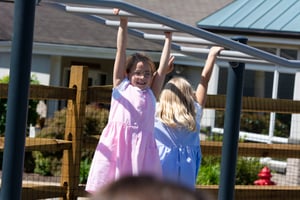 When you think of your child starting kindergarten, you likely think about children holding a pencil correctly to properly write their name, or drawing a picture with crayons, or painting on an easel. These all require fine motor skills.
When you think of your child starting kindergarten, you likely think about children holding a pencil correctly to properly write their name, or drawing a picture with crayons, or painting on an easel. These all require fine motor skills.
After more than 20 years as a kindergarten teacher at The Peck School, I would argue gross motor skills are actually more important because they help promote a child’s fine motor skills and also set a child up for success in school.
What are gross motor skills? Gross motor skills are movements that use large body muscles that a child makes with their arms, legs, feet, or entire body, such as crawling, running, hopping, skipping, and jumping. Even something as simple as standing, walking, and sitting up straight are examples of gross motor skill development.
Gross motor skills are important in children’s everyday lives. Whether it is independently getting dressed, climbing on a playground, or riding a bike, gross motor skills can provide benefits when a child enters a classroom. Without adequate gross motor skills, a child may not be able to physically sit up straight, or hold their body upright to sit at a desk and write.
So how do we strengthen core muscles to improve gross motor skills? The key is physical activity. Here are four ways you can help foster these skills in your child:
- Play on the playground! An activity such as playing on monkey bars not only helps with eye-hand coordination but also helps build core abdominal muscles. But gross motor skills can also be as simple as learning how to walk up a steep hill or catch a ball. Small activities like these mean a great deal for a child’s developmental learning.
- Give your child a "brain break." We all know children have short attention spans. If they are sitting for too long, they can get antsy and distracted. Therefore, children need "brain breaks." A brain break is literally taking a mental pause. As a kindergarten teacher, I often encourage physical brain breaks that utilize gross motor skills. These breaks get students moving, carrying blood and oxygen to the brain, which can help a child to become more focused.
- Make the most of transitions. A great way to incorporate physical activity into your child’s day is to incorporate it into your daily transitions. I often tell my students to “hop back to their desk on one foot, jump like a bunny, or walk like a bear” to encourage movement.
- Practice crossing the midline. Crossing the midline is another that is vital to a young child’s developmental learning process. Crossing the midline helps promote communication between the left and right sides of the brain. A good game of Simon Says can provide an opportunity for movement paired with logical thinking. These exercises can be anything from using your left hand to touch your right foot or various yoga positions. Another resource for movement ideas is a popular website I often use called “GoNoodle”. Here children follow directions where they have to move physically, such as marching or dancing.
So if you struggle to find ways to get your child active, I highly suggest you introduce gross motor activities and brain breaks into his or her daily schedule. This can improve focus throughout the day, while simultaneously having a lot of fun and preparing your child for success in kindergarten and beyond.





